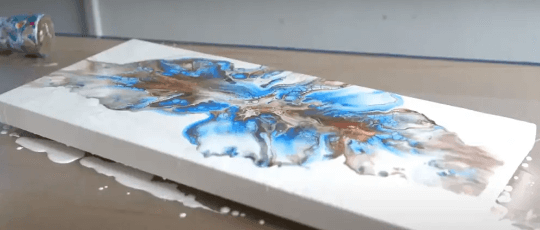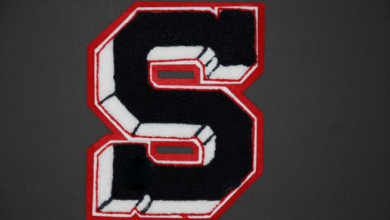Acrylic Pour Painting Ideas: Create Stunning Abstract Art With These Tips

Find your next masterpiece with Acrylic Pour Painting Ideas. An Acrylic pour painting, or fluid art, has gained immense popularity in contemporary art.
Its mesmerizing, abstract compositions are a testament to the creative possibilities that acrylic paints offer.
Whether you’re an experienced artist or a beginner looking to explore this captivating technique, this article will provide essential tips and Acrylic Pouring Techniques to create stunning acrylic pour paintings.
- Gather Your Supplies
Before you start your acrylic pour painting project, gathering all the necessary materials is essential.
These include acrylic paints in various colors, a pouring medium, canvases or boards to paint on, plastic cups for mixing, stir sticks for blending your paint and medium, and a drop cloth or protective covering for your workspace. Having all your supplies ready ensures a smooth and organized painting process.
- Choose Your Color Palette
Your choice of colors plays a vital role in your acrylic pour painting. This step involves deciding which colors you want to use in your artwork.
You can opt for vibrant and contrasting colors to create bold and dynamic compositions or a more subdued and harmonious color scheme for a serene and calming effect.
The colors you select will set the mood and tone of your artwork, so take some time to consider the emotions and message you want to convey.
- Mix Your Paints
Mixing your paint is a crucial step in acrylic pour painting. You’ll blend your acrylic paints with a pouring medium to do this. The pouring medium helps achieve the right consistency, similar to warm honey.
Mixing each color thoroughly to ensure no lumps or inconsistencies in your paint is essential. Achieving the right consistency is key to creating beautiful, fluid acrylic pours.
- Experiment With Different Pouring Techniques
Acrylic pour painting offers a range of pouring techniques to experiment with. Two popular methods include the “dirty pour” and the “flip cup” technique.
In the dirty pour, you layer different colored paints in a single cup and pour them onto the canvas simultaneously.
The flip-cup technique involves placing the canvas on top of the cup and flipping it together, allowing the paint to flow out.
These Paint Pouring Techniques result in unique patterns and effects, so don’t be afraid to try them out and discover which ones resonate with your artistic vision.
- Consider Using Silicone Oil
Silicone oil is an optional additive that can enhance your acrylic pour paintings. Adding a few drops of silicone oil to your paint mixture can create intriguing cellular structures within your artwork.
These cells add depth and visual interest to your piece, making it even more captivating. Silicone oil can be fun to experiment with, but it’s not mandatory in acrylic pour painting.
- Practice Control And Precision
While Acrylic Pouring is known for its fluidity and spontaneity, you can still exercise control and precision in your work.
This involves using tools like palette knives, straws, or canvas tilting to guide the paint and create specific patterns or lines within your composition. This level of control allows you to introduce intention and detail into your abstract art.
- Allow For Drying Time
After completing your acrylic pour, it’s crucial to be patient and allow sufficient drying time. It typically takes 24 to 48 hours for the paint to dry completely.
During this time, ensure the artwork is on a level surface in a dust-free environment. Rushing the drying process can lead to cracks or other imperfections in your finished piece.
- Finish And Protect Your Artwork
Once your acrylic pour painting has thoroughly dried, protecting and enhancing it with a varnish or clear sealant is a good practice. This step not only safeguards your artwork but also brings out the vibrancy of the colors.
You can choose between a glossy or matte finish, depending on your personal preference and the effect you want to achieve.
Applying a varnish provides a professional touch to your acrylic pour painting, making it ready for display.
- Experiment With Different Pouring Techniques
In addition to the “dirty pour” and “flip cup” acrylic paint pouring techniques, there are several other pouring methods to explore.
One of them is the “swipe technique,” where you apply paint to the canvas and then swipe it using a palette knife or a piece of cardboard.
It creates beautiful streaks and patterns. You can also try the “Dutch pour,” which involves blowing air onto the poured paint to manipulate its movement, resulting in dynamic and organic shapes.
- Incorporate Different Surface Textures
While canvas is a popular surface for acrylic pours painting, don’t limit yourself to just one type of canvas or board. Experiment with surfaces like wood, tile, or even stretched fabric.
Each surface can yield unique textures and effects. Preparing your chosen surface with gesso or a suitable primer can also influence how the paint interacts with it.
Conclusion:
Acrylic pour painting is a fun and creative way to explore your artistic vision. With various pouring techniques, unexpected effects can be achieved with each unique piece.
To ensure success, incorporate control and precision in your work, allow the paint to dry completely, finish and protect your artwork with a sealant or varnish, experiment with different surface textures, and use silicone oil as an optional additive. You can create stunning works of art with practice and the right materials!








